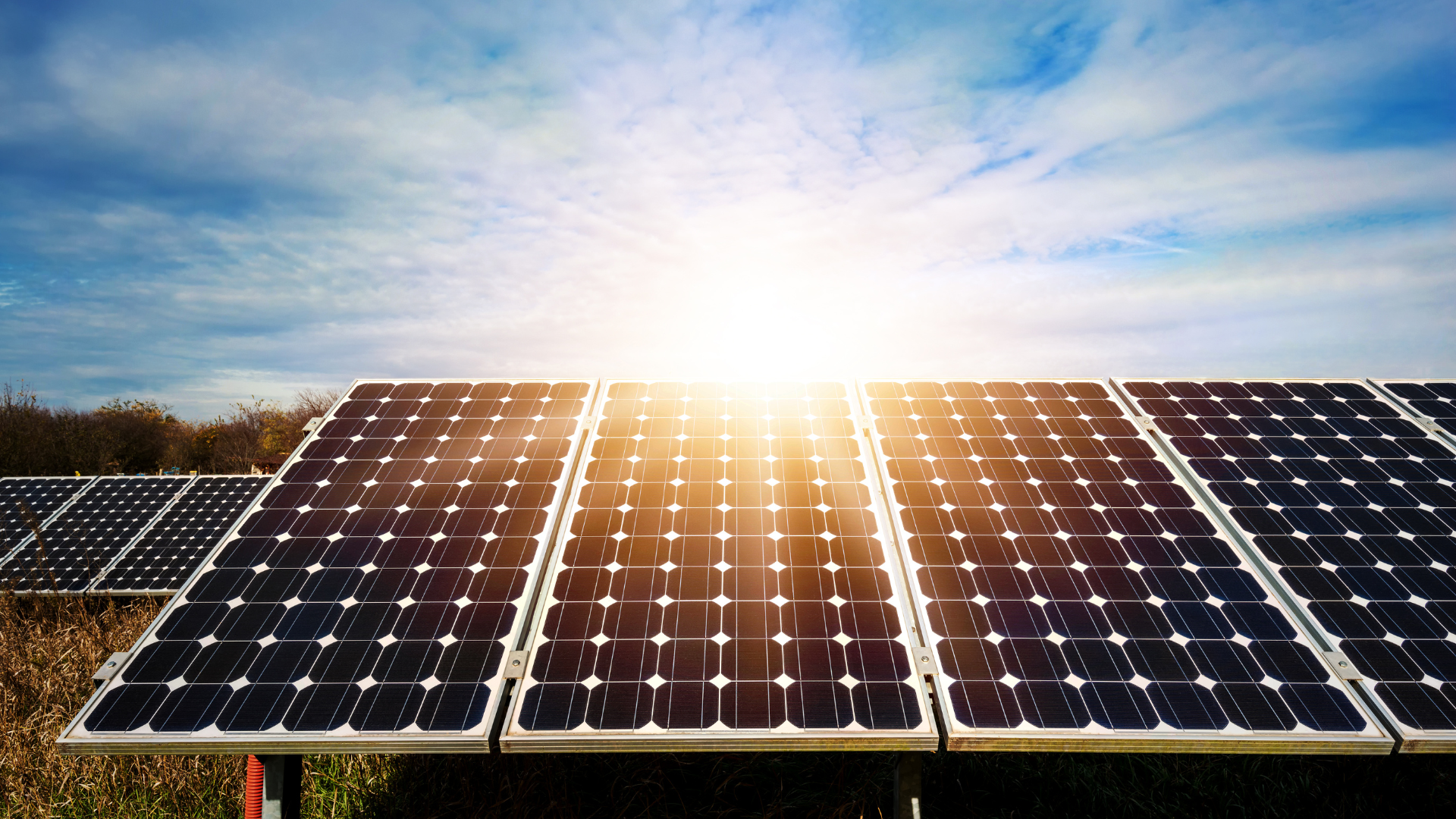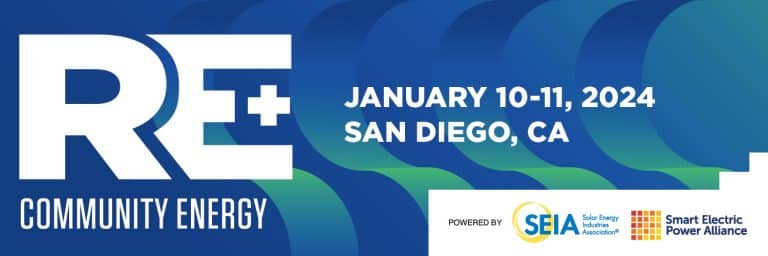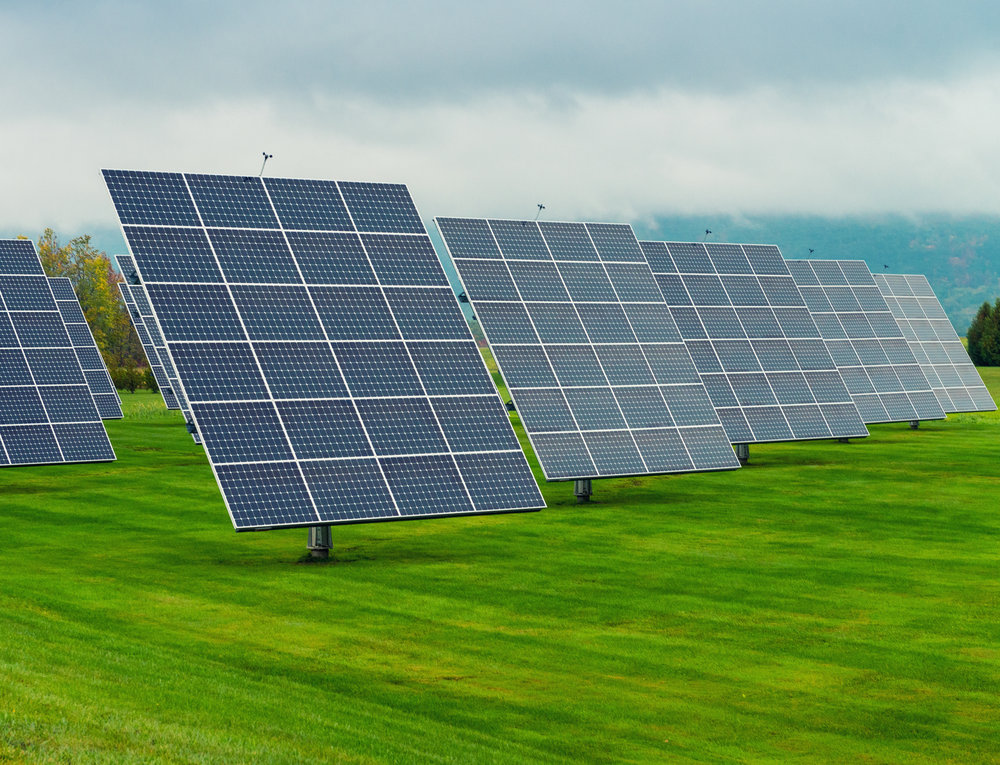Low- and moderate-income (LMI) households have largely been left out of America’s clean energy transition. Most families cannot afford to purchase an electric vehicle, install rooftop solar, or make energy efficiency upgrades.
This needs to change: “Mitigating climate change requires all hands-on deck. The clean energy transition will only be durable if it includes everyone equitably,” said Steph Speirs, CEO and co-founder of Solstice. Community solar is one of today’s few accessible options – it requires no upfront costs and delivers guaranteed savings on electricity bills. Despite being offered primarily in states where enabling legislation has passed, community solar is rapidly expanding and allows Americans across the income scale, including those who rent their homes and live in buildings with multiple units, to support the development of local solar and receive the financial benefits of clean energy. There is widely recognized momentum right now to focus on delivering the product to families who need it most; LMI community solar is a perfect opportunity to provide bill savings for households facing the highest energy burden.
There are more than 10 states already offering (or set to soon offer) community solar with requirements to serve significant percentages of LMI customers. But as is often the case with assistance programs, the hoops that income qualified customers have been asked to jump through are onerous and invasive. Because of the additional paperwork required, it can take significant trust-building for LMI customers to enroll in community solar – and subscriber organizations themselves must take care to provide adequate guidance and check the necessary boxes, according to a complex web of varying state rules.
The trend is in its early stages but there is much more on the horizon, fueled by the increasing maturity of the industry, comfort among financiers, and an influx of federal funds dedicated to bringing clean energy to environmental justice communities.
Table of Contents
What should a low-income community solar product look like?
As the LMI community solar sector grows, it’s critical we, as an industry, get the product right so that the maximum number of low-income customers can benefit from it. Some elements are designed at the program level and others roll down to the decision of project owners. The most important characteristics for low-income community solar projects to succeed are: (1) consolidated billing, (2) streamlined income verification, (3) meaningful discounts, and (4) prohibition of credit checks and termination fees.
- Require consolidated billing: Dual bill community solar creates confusion and distrust for all customers and we have found that it typically leads to fewer LMI households signing up because it makes the enrollment process more burdensome. Families in disadvantaged communities have long been subject to unscrupulous electricity sales practices in deregulated markets – and a targeted and exploitative approach has come from other industries as well. A dual bill product, which sees subscribers get a bill from a private company that they are newly aware of, increases skepticism and leads to much higher churn, as those customers quickly become wary and opt out of the product.
- Streamline income verification: In a perfect world, customers can self-attest to their own income level in order to qualify for LMI community solar. Or they can be qualified simply by living in an area where most households are under a certain income threshold. These methods put the least amount of burden on low-income customers and already exist in some states; self-attestation is gaining traction and will soon roll out in the permanent programs for both New Jersey and Maryland. But more commonly, customers are asked to provide proof of participation in assistance programs or payment info that shows they meet a certain income threshold. Making customers share personally sensitive documents with a private company is a bad practice and the myth of public assistance fraud has been debunked in multiple studies. And that additional barrier often corresponds with the customer seeing only an additional dollar or two in savings per month – sometimes, no additional savings at all compared to other non-income qualified customers on the same project who can sign up much more easily. There’s a paradox at work: by forcing poor people to prove they are poor, programs sign up fewer low-income households for benefits, which in turn slows down the clean energy transition.
- Mandate meaningful minimum discounts: If that additional barrier for income qualification is to exist, which it almost always does, the product must offer meaningful savings. It makes no sense to ask a customer to go through an income qualification process without the reward of an increased discount. The attractiveness of the offer plays a huge role in how likely folks are to follow through on enrollment.
Prohibit credit checks and termination fees: Fortunately, credit checks and termination fees are quickly becoming obsolete in community solar. Neither practice is conducive to building trust and promoting inclusivity. Solstice invented a product years ago with the Department of Energy, called EnergyScore, which is a substitute for FICO checks: it is a better indicator of predicted utility bill payment and even has the potential to boost credit scores via recorded community solar payments.
What is the typical threshold for low-income community solar customers? How are customers verified?
As you might have guessed, the standard varies across states. But the most common income threshold is 80% of area median income. The source of truth here can vary but data from the U.S. Department of Housing and Urban Development is widely recognized.
Things get more complicated when it comes to the actual process of verifying that potential subscribers are eligible under a specific program’s definition of LMI. The key questions that determine how good a method is: does it require additional work from the customer, and do they have to provide potentially sensitive documentation?
The qualification methods that we most often use are proof of participation in designated public assistance programs and living in approved geographic zones that the program recognizes as majority LMI (for example, this Illinois Solar for All map or the EPA’s Environmental Justice Screening Tool). Geo-eligibility is better than program documentation because the answers to those key questions are no. Unfortunately, with proof of program participation, the answers can be yes. The same goes for the third method in our toolbox, which is documentation of income via paystubs or other tax-related documents. The less we make potential customers do, the better for them and for efficient project deployment. Solstice has been diligently advocating for methods that aren’t intrusive (namely self-attestation and geo-qualification) at the federal and state level for years.
Does Solstice tailor its acquisition strategy for low-income projects?
A common mistake in the community solar industry is to treat all low-income households as if they are the same, rather than working to understand how each community is different and adjusting messaging and tactics accordingly. Another common mistake is to use the same engagement methods for low-income households that work for mass market households.
For LMI projects, Solstice prioritizes a community partnership strategy built to work through trusted networks, like local nonprofits and municipal campaigns. Intentional community engagement and organizing are critical to successfully educate potential subscribers and give them the agency to choose clean energy with confidence. In general, Solstice’s outreach involves omni-channel tactics designed to touch households in a variety of ways, so they receive education and support in a variety of places.
To be inclusive of as many eligible customers as possible, Solstice has implemented call-first enrollment, catering to LMI families who may lack a personal computer but have access to a phone. Additionally, we provide multiple language options on digital and printed assets, as well as for our sales and customer success teams. Onsite enrollment events have been implemented in most states, creating a hands-on environment to assist customers in the enrollment process for greater accessibility. Overall, we continue to diversify our acquisition mix to include enrollments through residential service orgs, houses of worship, essential non-profit organizations, and door to door service.
Hilary
A true Orleans native, Hilary’s love and pride for her community run deep. With ancestry spanning generations in her small coastal town, she is an advocate for preserving the history and laid-back way of life on the Cape. Though Hilary tells us she doesn’t make lots of money herself, she is eager to help her community in the small ways she is able. Like many in her area, Hilary found herself in need of solutions to ease her financial burdens – and community solar was able to provide her with some relief on her monthly energy costs while empowering her to make the environmental impact she desired on her beloved town.
“I don’t make enough to pay all my bills. I live on a fixed income that barely covers my mortgage and doesn’t leave me much for other expenses like car insurance, phone, all that stuff. I have to be concerned about where every bit of money goes. Every penny counts. Take it from somebody who counts every single one.”
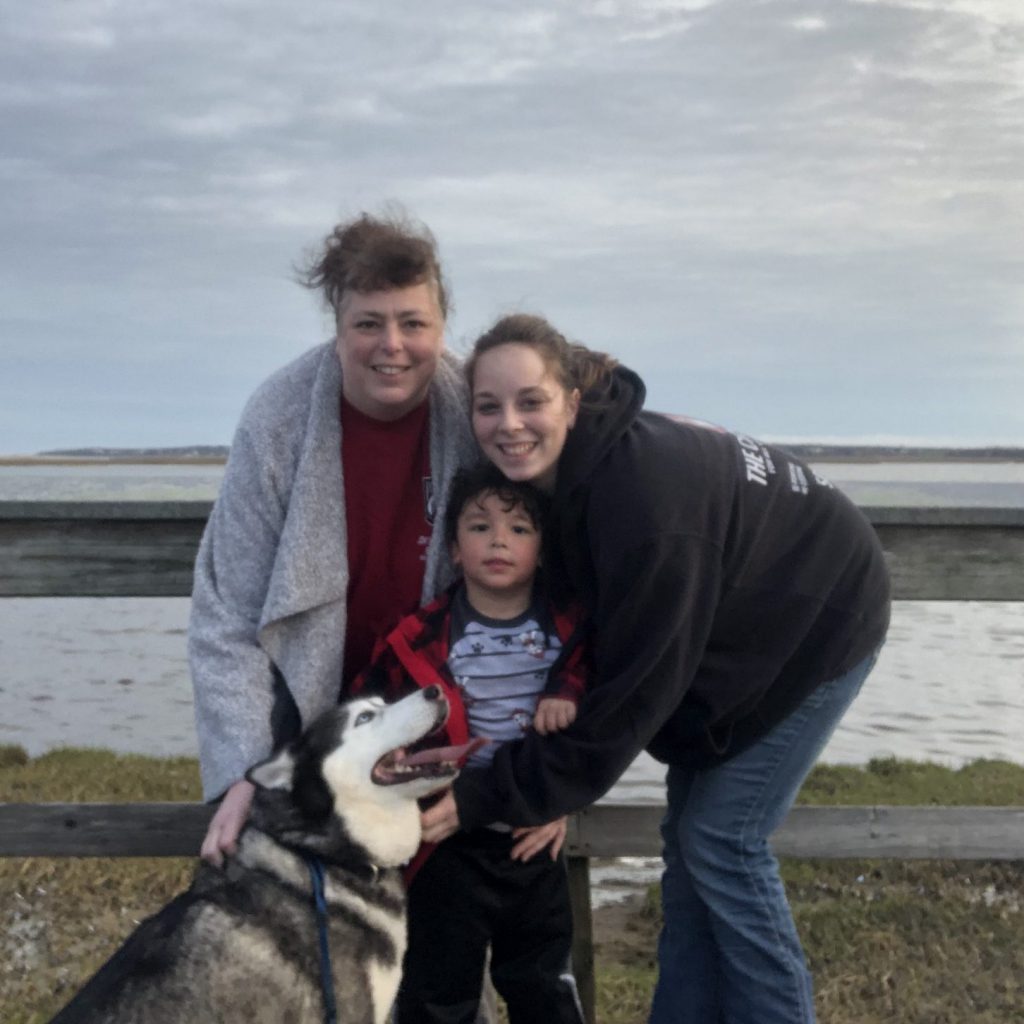
Hilary Young
Solstice Subscriber in Orleans, MAJoan
Joan lives in an apartment and can’t put solar panels on her roof. She assumed that if the building owner wanted solar, they’d buy it. She never considered it to be an option available to her. As a single mom, she expressed that she is grateful to get savings wherever she can, and is excited to have found a solution that brings her affordable clean energy.
“When I heard about Solstice I thought ‘This is so cool: we can join a solar farm, we can get solar energy, but we don’t have to have the panels on our roof!’ Lowering my costs? That’s a big plus. I can go there and show my kids and say, ‘Hey, guess what, we’re getting our energy from here.’ I think that’s really cool.”
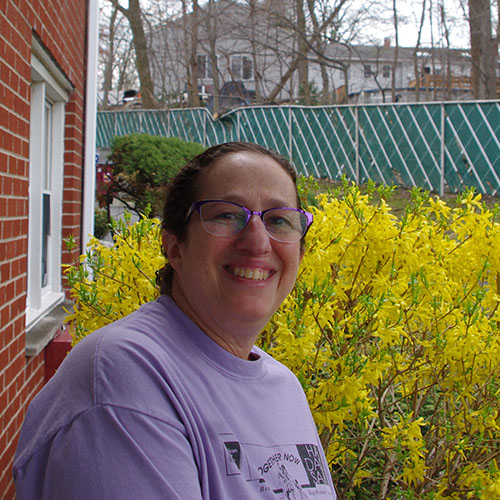
Joan Karasik
Solstice Subscriber in Suffern, NYWant to see want Solstice can do for your renewable energy projects? Can Solstice support applications for the IRA low-income tax credits?
Absolutely. The Inflation Reduction Act unlocked 10 years of tax credits to incentivize the development of low-income community solar and has just launched an additional $7 billion in grants for states, territories, Tribal governments, municipalities, and nonprofits to expand access for low-income and disadvantaged communities to affordable solar. The final rules and application process for the low-income bonus tax credits came out in August 2023, and Solstice is assisting developers in preparing their applications and implementation plans to apply for the credits.
Now is the time for developers to focus on low-income community solar!
A new era focused on low-income community solar is ahead, and we couldn’t be more excited. Solstice – and you! – have a golden opportunity to keep pushing this industry in the right direction, for the same reasons that we entered it in the first place. We’ve worked on low-income projects in Illinois, New Jersey, Massachusetts, New York, and we were selected for half the awarded projects in New Mexico. The upcoming program in California, permanent programs in New Jersey and Maryland, and much-anticipated low-income ITC bonus are all further confirmation that community solar in five years will be delivering on equity at a new level.
And those aren’t the only indicators. The U.S. Department of Health and Human Service just announced an initiative to ensure that LIHEAP customers across the country are fully able and incentivized to participate in community solar. The Department of Energy has a tool in the works that will help connect LIHEAP customers with community solar projects. Now is the time to dig in, learn more, and get involved in all that is to come.
1 https://www.energy.gov/scep/slsc/lead-tool
2 https://www.theatlantic.com/politics/archive/2013/08/just-how-wrong-is-conventional-wisdom-about-government-fraud/278690/; https://www.salon.com/2021/04/04/welfare-fraud-is-actually-rare-no-matter-what-the-myths-and-stereotypes-say/; https://www.prisonstudies.org/news/united-states-poverty-crime-wealthy-nation
Want to see want Solstice can do for your renewable energy projects?
Contact our Business Development team today to get a custom demo!
- Reactivate / Solstice
- Park Forest / ILSFA
- Guide to ILSFA
- El Valor (click here for a Video)
- Solstice for Developers
- LMI qualification (best experience in the market, from initial education to qualification and follow-through)
- Inclusive marketing materials (non-traditional media, multilingual content, inclusive messaging, and programming for underserved communities)
- Housing authorities (community organizing, in-depth customer education for mission-aligned housing authorities and their residents)
- Workforce development partnerships (project revenues that directly benefit residents of installation sites)
- EnergyScore (a more accurate and inclusive alternative to FICO credit scores for predicting utility payment behavior – and potentially even boosting credit scores)
- Community partnerships (strong relationships with essential businesses and organizations)
